#character alignment explained
Photo
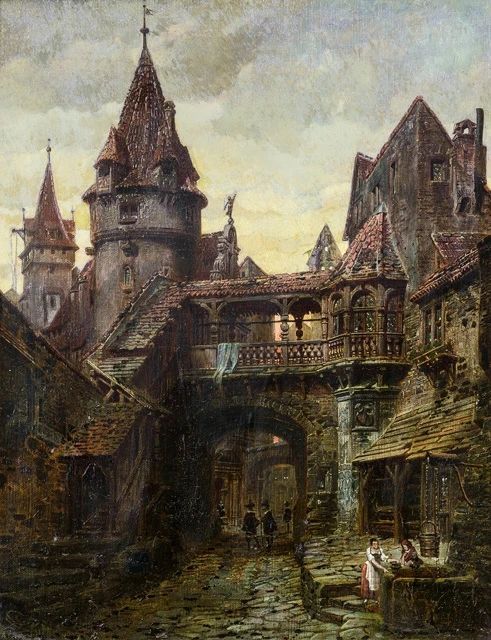
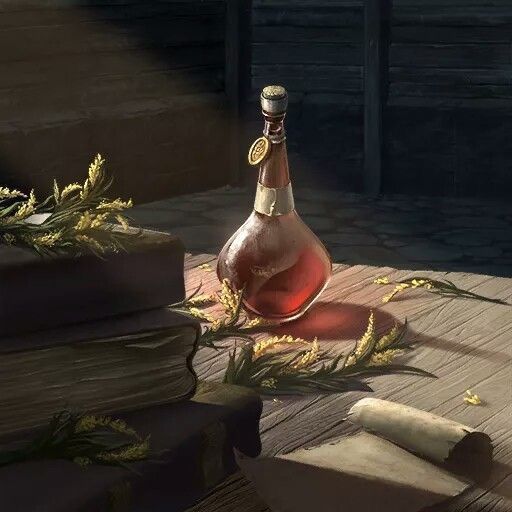

𝐌𝐨𝐫𝐚𝐥 𝐀𝐥𝐢𝐠𝐧𝐦𝐞𝐧𝐭 𝐄𝐱𝐩𝐥𝐚𝐢𝐧𝐞𝐝
I thought I should make a post explaining why I add a moral alignment to every character I write for!
This way of describing characters came about in a 1977 version of the Dungeons & Dragons handbook by Gary Gygax. The alignment system was based on the fantasy stories of Michael Moorcock and Poul Anderson.
It was a way for players to decide how their characters would think and act in the game. And I’ve now integrated it as a part of how I see characters and their motives.
Here’s a few alignment tests if you’d like to find out for yourself!
(P.s each test has different questions so one might not give you the same answer as the other. Quite like the Hogwarts House quizzes).
Comment down below or reblog with your result!
Test One.
Test Two.
Test Three.
Test Four.
Test Five.
𝐋𝐀𝐖𝐅𝐔𝐋 𝐆𝐎𝐎𝐃
𝑒𝑥𝑎𝑚𝑝𝑙𝑒: Superman, Brienne of Tarth, Robocop.
Crusaders
・They’re the protectors, but also seen as morally rigid and stubborn
・Always do the right thing; what’s expected of them by society
・Feel very uncomfortable breaking the rules
・They believe in societal rules and expect everyone to follow those rules. They can be blinded by their righteousneous at times.
・They get angry when people get away with breaking the rules
・Believe good deeds and behaviours will be rewarded
・This alignment has good intentions; there is no malice in their actions - even if something bad may happen because of them
・They take pride in bringing ‘bad people’ to justice
・The upside of this alignment is that it combines honour and compassion.
・The downside of this alignment is that it retricts freedom and criminalises self-interest
・Sees Lawful Good as Honorable & Humane
・Sees Neutral Good as Humane but Unreliable
・Sees Chaotic Good as Humane but Dishonorable
・ Sees Lawful Neutral as Honorable but Apathetic
・Sees True Neutral as Unreliable & Apathetic
・Sees Chaotic Neutral as Dishonorable & Apathetic
・Sees Lawful Evil as Honorable but Ruthless
・Sees Neutral Evil as Unreliable & Ruthless
・Sees Chaotic Evil as Dishonorable & Ruthless
𝐍𝐄𝐔𝐓𝐑𝐀𝐋 𝐆𝐎𝐎𝐃
𝑒𝑥𝑎𝑚𝑝𝑙𝑒: Jon Snow, Gandalf, Spiderman.
Benefactors
・Believe in doing what’s right, even if that means going against the law
・They help others because they have the desire to do so, not because the law or anyone else, tells them to do it
・They recognise that the law can be unjust. They don’t blindly follow it.
・Most protagonists embody this alignment.
・They - usually - don’t kill, even if the villain is right in front of them.
・The upside of this alignment is that they will do whatever they can to help those in need
・The downside of this alignment is that they can become unpredictable when they think they’re doing the right thing
・They don’t disregard the law completely, but will break it if it means helping someone
・The difference between Neutral Good and Chaotic Good, is that CG hates authority and the government/leading state. While NG thinks there is a reason for rules.
・It’s a great alignment because it means doing good without bias for or against order. But can be a bad/dangerous one because it can limit the actions of the truly capable.
・Sees Lawful Good as Humane but Strict
・Sees Neutral Good as Practical & Humane
・Sees Chaotic Good as Humane but Lax
・Sees Lawful Neutral as Strict & Apathetic
・Sees True Neutral as Practical but Apathetic
・Sees Chaotic Neutral as Lax & Apathetic
・Sees Lawful Evil as Strict & Ruthless
・Sees Neutral Evil as Practical but Ruthless
・Sees Chaotic Evil as Lax & Ruthless
𝐂𝐇𝐀𝐎𝐓𝐈𝐂 𝐆𝐎𝐎𝐃
𝑒𝑥𝑎𝑚𝑝𝑙𝑒: the 11th Doctor, Robin Hood, Mary Poppins.
Rebels
・They don’t care about society’s rules, they care about what’s doing right
・Freedom is their highest value
・Detest authority
・This is the best alignment you can be because it combines a free-spirit with a good heart.
・They believe freedom is the only way a person can feel true happiness
・The upside of this alignment is that they will do absolutely everything in their power not only to help innocence, but bring about change if they can
・The downside of this alignment is that they disrupt the order of society and punish those who do well for themselves
・CG will keep their word to anyone who isn’t evil
・The difference between Chaotic Good and Chaotic Neutral is that CG is self-aware of their actions. They don’t want other people to get hurt.
・They’re willing to lie, cheat and steal if it’s for the greater good
・CGs’ don’t put their desires above the greater good; they want to help in every way they can.
・Sees Lawful Good as Humane but Dogmatic
・Sees Neutral Good as Humane but Conformist
・Sees Chaotic Good as Independent & Humane
・Sees Lawful Neutral as Dogmatic & Apathetic
・Sees True Neutral as Conformist & Apathetic
・Sees Chaotic Neutral as Independent but Apathetic
・Sees Lawful Evil as Dogmatic & Ruthless
・Sees Neutral Evil as Conformist & Ruthless
・Sees Chaotic Evil as Independent but Ruthless
𝐋𝐀𝐖𝐅𝐔𝐋 𝐍𝐄𝐔𝐓𝐑𝐀𝐋
𝑒𝑥𝑎𝑚𝑝𝑙𝑒: Dwight K. Schrute, Percy Weasley, Judge Dredd.
Judges
・Lawful Neutrals’ always act in accordance with the law, tradition or code.
・They behave in a way that matches the organisation they follow. They’re deathly loyal to it.
・Because they are so emotionless when following their tradition/law, they can come off as Lawful Evil
・The upside of this alignment is that they are reliable and honorable without being a zealot
・The downside of this alignment is that they seek to destroy choice, freedom, individuality, diversity.
・They believe in the government wholeheartedly, even if it’s hurting its citizens. Even if it is becoming tyranical.
・LN have blind loyalty
・They rarely seek things for themselves. Their desires line up with the laws and traditions.
・The difference between Lawful Good and Lawful Neutral is that LG will question the laws that are hurtful to others. They aren’t completely following blindly. They speak up.
・Lawful Neutral doesn’t consider morality when abiding by the law
・Sees Lawful Good as Honorable but Idealistic
・Sees Neutral Good as Unreliable & Idealistic
・Sees Chaotic Good as Dishonorable & Idealistic
・Sees Lawful Neutral as Honorable & Realistic
・Sees True Neutral as Realistic but Unreliable
・Sees Chaotic Neutral as Realistic but Dishonorable
・Sees Lawful Evil as Honorable but Egotistic
・Sees Neutral Evil as Unreliable but Egotistic
・Sees Chaotic Evil as Dishonorable and Egotistic
𝐓𝐑𝐔𝐄 𝐍𝐄𝐔𝐓𝐑𝐀𝐋
𝑒𝑥𝑎𝑚𝑝𝑙𝑒: The Chesire Cat, Lara Croft, Malcolm Reynolds.
Undecideds
・True definition of ‘on the fence’
・They neither want to hurt nor help others; they only want to keep themselves alive and will do whatever that means to make sure it happens.
・They don’t uphold the laws but neither do they rebel
・The upside of this alignment is that they act naturally - without prejudice.
・The downside is that they lack conviction and are apathetic.
・Basically...they are nice to those that are nice to them and hurt those that hurt them.
・True Neutrals’ are offended by those with big opinions
・They despise bigots
・And usually avoid philosophical ideals altogether
・Will keep their word if it’s in their best interest
・Will never betray a family member, friend or ally unless the situation is dire
・True Neutral characters stay non-committed to any cause, legal or moral system.
・Sees Lawful Good as Strict & Idealistic
・Sees Neutral Good as Practical but Idealistic
・Sees Chaotic Good as Lax & Idealistic
・Sees Lawful Neutral as Realistic but Strict
・Sees True Neutral as Practical & Realistic
・Sees Chaotic Neutral as Realistic but Lax
・Sees Lawful Evil as Strict & Egotistic
・Sees Neutral Evil as Practical but Egotistic
・Sees Chaotic Evil as Lax & Egotistic
𝐂𝐇𝐀𝐎𝐓𝐈𝐂 𝐍𝐄𝐔𝐓𝐑𝐀𝐋
𝑒𝑥𝑎𝑚𝑝𝑙𝑒: Han Solo, Captain Jack Sparrow, Catwoman.
Free-Spirits
・Chaotic Neutrals’ follow their heart, but in comparison with Chaotic Goods’ they won’t self-sacrifice for the greater good.
・They hate being given orders, and actively go against the law. Even if it’s because of something petty.
・They can easily slip into Chaotic Good or Chaotic Evil with one step
・This alignment is the best you can be because it represents true freedom from the law, societal standards and a moral code.
・They can be a dangerous alignment because they want to destroy authorative figures and structures; even if it’s doing good for the community.
・They believe there is no order to anything, even their actions. They’re completely unpredictable and may do things on a whim.
・This alignment is usually the con-mans, the gamblers, insurgent. Aka, the uncomitted free-loader who desires nothing more than self-gratification.
・CN will keep their word if it serves their self-interest
・These people don’t want people to suffer because of their actiohs - but don’t care if their actions may hurt others.
・Sees Lawful Good as Dogmatic & Idealistic
・Sees Neutral Good as Conformist & Idealistic
・Sees Chaotic Good as Independent but Idealistic
・Sees Lawful Neutral as Realistic but Dogmatic
・Sees True Neutral as Realistic but Conformist
・Sees Chaotic Neutral as Independent & Realistic
・Sees Lawful Evil as Dogmatic & Egotistic
・Sees Neutral Evil as Conformist & Egotistic
・Sees Chaotic Evil as Independent but Egotistic
𝐋𝐀𝐖𝐅𝐔𝐋 𝐄𝐕𝐈𝐋
𝑒𝑥𝑎𝑚𝑝𝑙𝑒: Darth Vader, Dolores Umbridge, Lex Luther.
Dominators
・This alignment is a tyrant
・They have no problem with for-going morals in honor of the law.
・The downside of this alignment is that evil combined with law, means a society-wide regimes.
・Fannatics, dictators and extremists fall under this alignment
・This alignment cares about traditions, enforcing the law and keeping order
・These people/characters consider themselves the best because they combine ‘honour’ with a dedicated self-interest.
・However, this is the most dangerous alignment because these people will manipulate the law to suit their desires
・They hold any Lawful alignment as honorable, chaotics as dishonorable.
・Lawful Evil absolutely hate Chaotic Good people/characters very ... very much. They pose the most threat.
・Labelled ‘diabolical’, Lawful Evils’ will always use the rules. No matter how evil they are, they will never break the rules.
・They will do anything; kill, maim, torture - as long as it doesn’t break the law.
・Sees Lawful Good as Honorable but Self-Righteous
・Sees Neutral Good as Unreliable & Self-righteous
・Sees Chaotic Good as Dishonorable & Self-Righteous
・Sees Lawful Neutral as Honorable but Irresolute
・Sees True Neutral as Unreliable & Irresolute
・Sees Chaotic Neutral as Dishonorable & Irresolute
・Sees Lawful Evil as Honorable & Determined
・Sees Neutral Evil as Determined but Unreliable
・Sees Chaotic Evil as Determined but Dishonorable
𝐍𝐄𝐔𝐓𝐑𝐀𝐋 𝐄𝐕𝐈𝐋
𝑒𝑥𝑎𝑚𝑝𝑙𝑒: Voldemort, Jabba the Hutt, Milady de Winter.
Malefactors
・Is selfish and has no issue with harming others to get what they want
・They might follow rules if it serves them, but they do not feel bound to them
・This alignment usually makes alliances with others to further their own agenda, but have no issue with double-crossing their allies
・They don’t see much value in having a moral code
・They’re feared because they carry out evil for evil’s sake
・They believe themselves the best alignment because they advance themselves without regard for others
・This alignment is only out for themselves; they don’t care about bringing down social structures. Instead, they have a desire and they will do whatever it is to get it.
・The difference between Lawful Evil and Neutral Evil is that LE still follows the law and its structures. NE may follow the law - only if it works in their favour, then they have no problem going below it to their gain
・The difference between Neutral Evil and Chaotic Evil is that the latter is completely unpredictable. NE will at least have a reason why they’ve allied with someone, or are following the rules in some way. CE will do things for absolutely no reason.
・Sees Lawful Good as Strict & Self-Righteous
・Sees Neutral Good as Practical but Self-Righteous
・Sees Chaotic Good as Lax & Self-Righteous
・Sees Lawful Neutral as Strict & Irresolute
・Sees True Neutral as Practical but Irresolute
・Sees Chaotic Neutral as Lax & Irresolute
・Sees Lawful Evil as Determined but Strict
・Sees Neutral Evil as Practical & Determined
・Sees Chaotic Evil as Determined but Laxed
𝐂𝐇𝐀𝐎𝐓𝐈𝐂 𝐄𝐕𝐈𝐋
𝑒𝑥𝑎𝑚𝑝𝑙𝑒: The Joker, The Night King, James Moriarty.
Destroyers
・These characters are malevolent
・Villains vying for revenge usually fall under this alignment
・One may see this as the most evil as they set out to destroy everything - order, life, tradition, freedom.
・They think they are the best alignment because they choose freedom and self-interest
・These people/characters never feel the need to keep to their word
・They prefer to work alone
・Just like the other Chaotic alignments, they too hate authority, and actively seek to destroy it
・Will kill for pleasure, has no moral code, doesn’t care at all about the wel-fare for others
・They believe self-discipline and honour as restrictive
・Seen as the most frightening because they are so unpredictable and violent
・ Lawful Good is the antithesis of Chaotic Evil
・Chaotic Evils’ believe that freedom should only belong to those strong enough to keep it
・Sees Lawful Good as Dogmatic & Self-Righteous
・Sees Neutral Good as Conformist & Self-Righteous
・Sees Chaotic Good as Independent but Self-Righteous
・Sees Lawful Neutral as Dogmatic & Irresolute
・Sees True Neutral as Conformist & Irresolute
・Sees Chaotic Neutral as Independent but Irresolute
・Sees Lawful Evil as Determined but Dogmatic
・Sees Neutral Evil as Determined but Conformist
・Sees Chaotic Evil as Independent & Determined
#witch the writer#moral alignment#moral alignment explained#lawful good#neutral good#chaotic good#lawful neutral#true neutral#chaotic neutral#lawful evil#neutral evil#chaotic evil#witchthewriter#writing#characters#writing tips#helpful tips#writers#dungeons and dragons#DnD
340 notes
·
View notes
Text
Blades LI Alignments
It struck me today that the TTRPG pages don't list alignments. Why? Because a lot of players and DMs/GMs see them as outdated and unnecessarily limiting?
...I'm gonna do it anyway.
Here's are the alignments, via the newest addition of Dungeons and Dragons (5e). Basically, how much you follow rules? And how much do you help people/how selfish are you?

Tyril- Lawful Good
Tyril is, to me, extremely Lawful Good most of the time. He's on a (according to him and society) righteous quest to stop evil with no room for nuance. Remember that time he decapitated a corrupted mayor in the middle of the street? He nudges a bit less lawful right at the end, but that's a big moment for him.
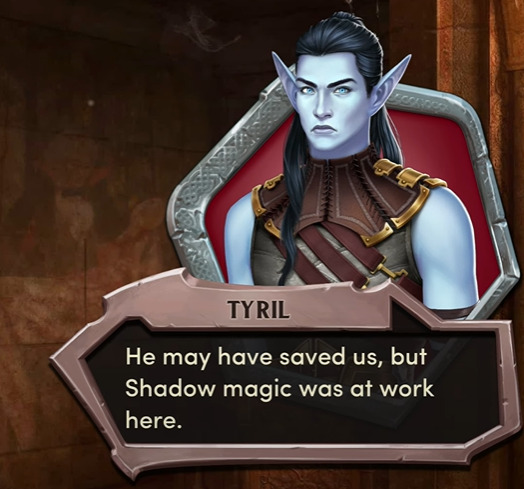
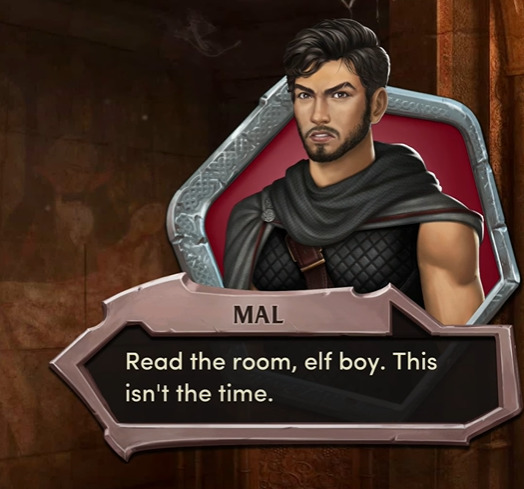
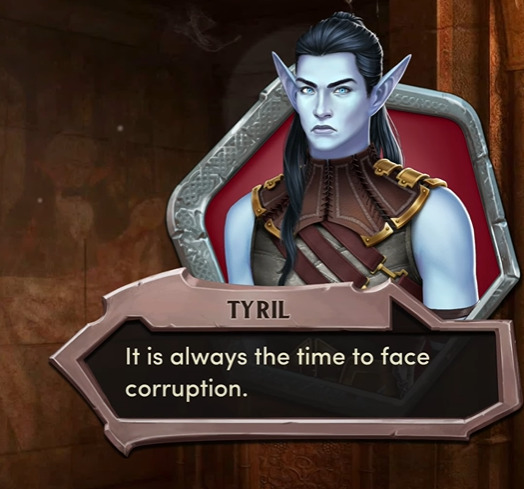
Nia- Neutral Good
Nia was raised in the strict rules of the Temple of Light, but she abandons those pretty quickly. She's not seeking out heists, but she kind of likes them. And Nia is undoubtably motivated to protect literally everyone. Textbook Neutral Good!

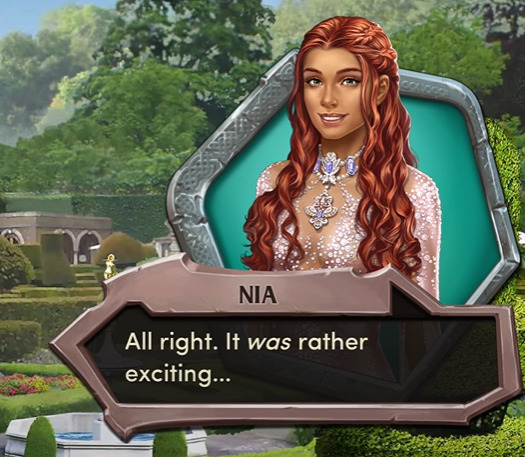
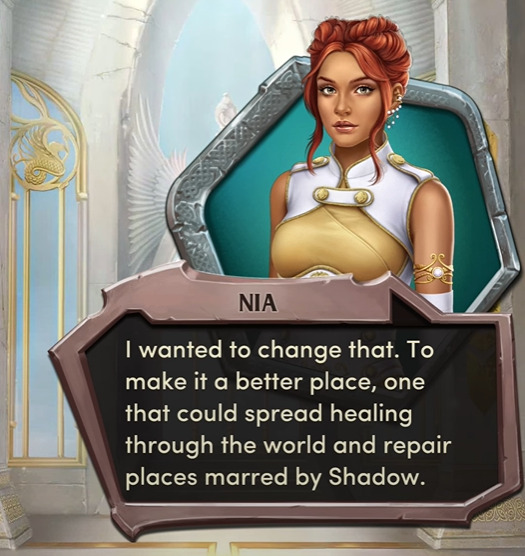
Mal- Chaotic Neutral to Chaotic Good
Mal has never once cared what the law told him to do and he's not about to start! Our boy is Chaotic, as rouges tend to be. Mal starts pretty focused on his own survival and nothing else (Neutral), but pretty openly acknowledges that MC made him focus on helping others (Good). Stealing from the rich to finance an orphanage you run where you refer to all of the kids as 'yours' is the most Chaotic Good thing to ever happen.



Imtura- Chaotic Neutral
Imtura is a pirate. And she doesn't seem to have any regard for even Flotilla law. Classic Chaotic. And she does lots of good things, but she seems more motivated by protecting the people shares cares about, rather than any more abstract sense of Right. I call that Chaotic Neutral.
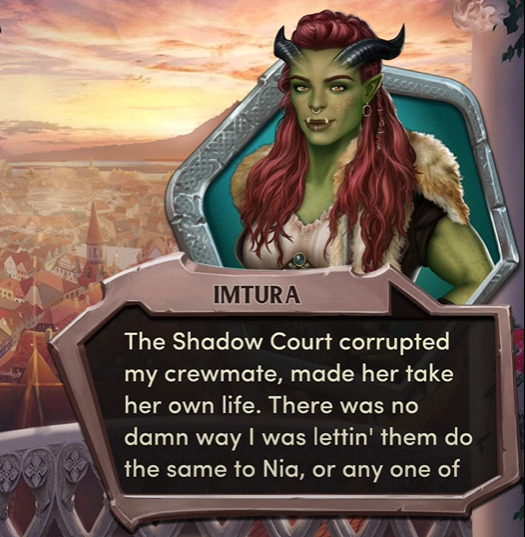


Valax- Lawful Neutral
Valax doesn't even have a TTRPG page, but she should! She does things that are both traditionally Evil (kidnapping, blood draining) and Good (owl bear protecting, not killing her friend). But Valax does almost all of them due to a code of conduct- initially set by the Ash Empress, but eventually set by Valax herself. To Valax, it's not about right or wrong. To me, that's Lawful Neutral.
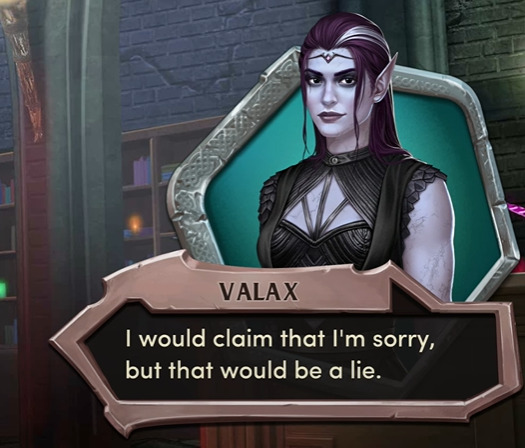
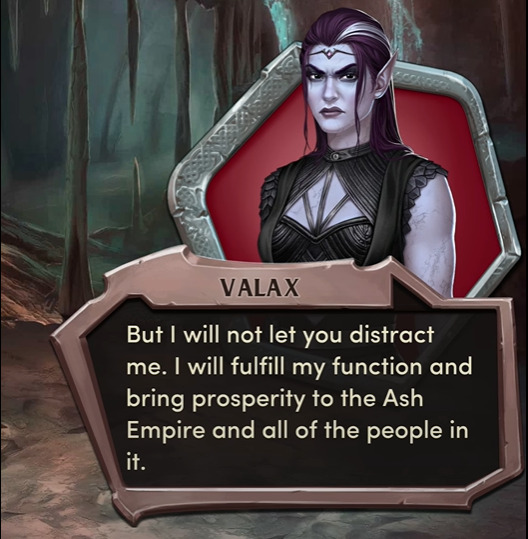
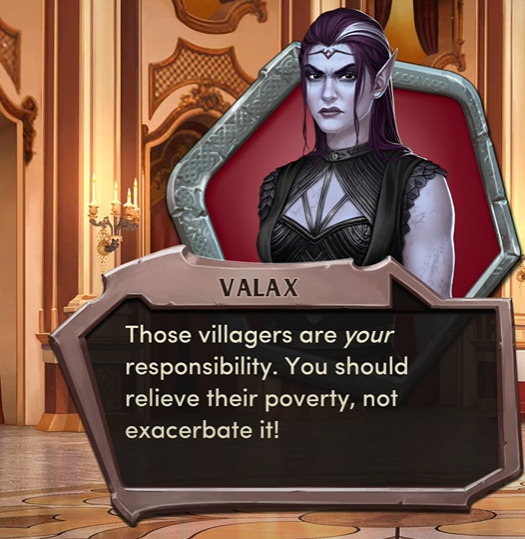
Aerin- Book 1 Neutral Evil, Book 2 True Neutral?
Aerin is a case where the cracks in alignment kind of show. To me, he's best embodied by this gif:
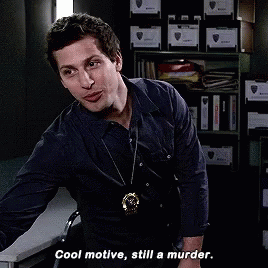
I went by process of elimination for him. And didn't give much weight to what Aerin says when he's fully corrupted, because that's a whole different thing.
Lawful/Chaotic: Aerin knows how to play along with what's expected of him, but clearly doesn't have much loyalty to the letter of the law. And at no point is he spontaneous. So he's in the middle Neutral column in both books.
Good/Evil: Aerin thought he was doing the right thing in Book 1. And he seemed to genuinely like the party and want to look out for them. But I think we can agree that bringing everyone together with the intention of summoning the Dreadlord and kidnapping Nia are both Evil.
Book 2, Aerin helps save the world, but only if you're not a dick to him. To me, that puts him more in the Neutral category. I feel like a fully Good character would still by out there trying to save the world no matter what.
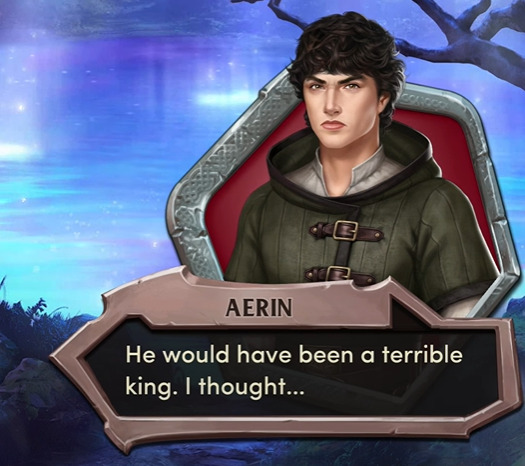
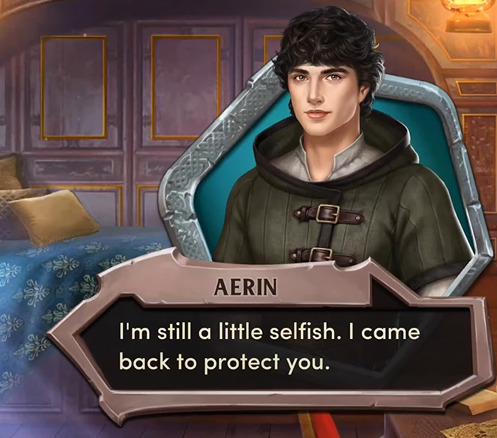

Any agreements or disagreements? I'd love to hear about them!
#I would love to see where the authors think these characters fall#I literally said “Cool motive- still murder” out loud when Aerin explained himself in Book 2#choices bolas#blades of light and shadow#blades of light and shadow 2#tyril starfury#nia ellarious#mal volari#imtura tal kaelen#valax#princess valax#aerin valleros#dnd#alignment chart
21 notes
·
View notes
Text
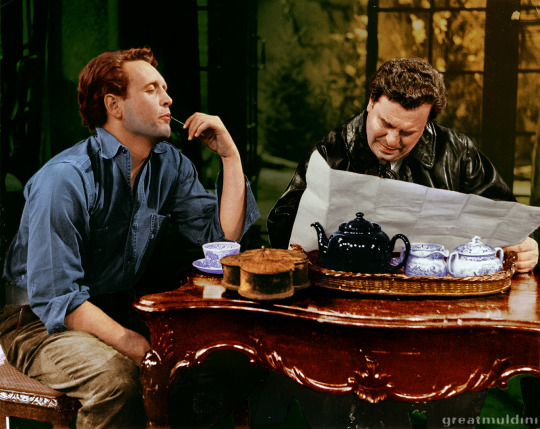
The Iron Harp
We’re all in prison together, Johnny, one way or the other.
Act 1
Outwardly, Joseph O'Conor's play is a simple tale of love and loss in times of war: set in rural Ireland in early April of 1920, the action takes place on the property of an English industrialist whose mansion has been taken over by a contingent of IRA volunteers. Their leader is Michael O'Riordan, a gifted poet-musician in civilian life and conveniently the peace-time manager of the Englishman's estate. Michael has recently been wounded in action; now blind as a result he is no longer on active duty but still responsible for an English prisoner of war. Being a man of his word, Captain John Tregarthen has made no attempt to escape, earning Michael's trust and eventually his friendship. He also earns the friendship and love of Michael’s cousin Molly Kinsella, with whom he spends long days roaming the extensive grounds of his idyllic prison. Dreaming of a future life together, the lovers are oblivious to the feelings of their “best friend” – who ends up sacrificing his love for Molly in what he hopes will be a lasting gesture of selflessness only to find that Fate intervenes, with devastating consequences for them all.
Completing the quartet of characters is the dark and “indistinct” figure of IRA commander Sean Kelly, a dark and "indistinct" figure who emerges from the shadows to immediately assert his authority not only in military matters but - crucially, and disturbingly - in those of the heart as well. Specifically, it is the heart of Michael O’Riordan that Kelly claims to know better than O’Riordan himself. As a flesh-and-blood character Kelly is difficult to pin down: cold and calculating by his own admission, he expresses admiration for Michael's hot-blooded fighting spirit. Michael's own startled response to Kelly entering "like Nemesis himself" is ambiguous at best, and even his description of Kelly as a “good friend” comes on the back of a warning to Johnny that "he won't like you."
When Kelly tells Michael that he has never been wrong and does not know what it means to feel regret, the sense of foreboding is inescapable, yet Michael never seems to give in to the negativity emanating from his old wartime comrade who admonishes him to see his friends “as they really are” and not as “you want to see them.” Ironically, Michael refuses to see an enemy in John Tregarthen, but he is equally stubborn in applying the same criteria of honour, loyalty, and friendship to Sean Kelly, who seems troubled by this flaw in Michael’s character: "you love people too much."
Michael's emotional warmth stands in stark contrast to Kelly's impersonation of infallibility - which Michael seems to accept as a token of his friend's unassailable integrity. He continues to defer to Kelly's judgment when a messenger arrives with bad news from the front: three IRA fighters have been killed in skirmishes with British forces, and reprisals must be carried out. Twisting the metaphorical knife in the very real emotional wound, Kelly as the commanding officer nominates blind Michael to be the impartial instrument of God's justice. Forced to select three victims for execution, Michael all but collapses when one of the chosen names is that of Captain John Tregarthen.
Act 2
After he has persuaded Johnny to flee the country and reunite with Molly back in England, Michael is left alone to guard the now empty house. Blind and unable to defend himself, Michael is powerless against two marauding Black & Tans who break into the property and proceed to taunt and abuse the solitary occupant. It does not take them long to realize their victim is an IRA member rather than a civilian enjoying certain protections. Further violence is prevented only by the surprise return of Captain Tregarthen, armed and in uniform, who holds the attacker at gunpoint until Kelly and his entourage arrive to take the men away. Where any other human being would have expressed relief or gratitude at the discovery that the life of his friend has been saved, Kelly’s reaction is characteristically impassive, betraying, if anything, a degree of irritation at the unforeseen complication that has shown the condemned prisoner – the enemy – to be capable of compassion and self-sacrifice in saving the life of his friend. Human qualities that Kelly explicitly claims not to possess. As if to prove the point, he responds with the formal announcement of Tregarthen’s impending execution.
The order is to be carried out within three days, enough time for Kelly to travel to headquarters - and return with a firing squad. But first he must interrogate the captured Tans. While Kelly is thus occupied, Molly manages to convince the love of her life to take her with him. Johnny only agrees to the plan on the promise that Michael will convince Kelly to rescind the execution. If Johnny and Molly can make their way to Belfast on the early morning goods train, and from there to England, all will be well. Michael knows how to distract the guards, and Molly can bribe the train driver to let Johnny jump aboard. Three loud whistles will give the all-clear. With hopes of future happiness rekindled, Molly and Johnny each rush off to their respective tasks, and Michael is left alone with three empty glasses that he cannot see – a detail that does not escape Kelly’s notice as he re-joins Michael to formally accept his plea for clemency. Which he says he will duly submit to "the general," but in his estimation the chances of success are slim. "For God's sake, don't build up hope," he tells Michael before agonizing – to himself – over how to soften the blow for Michael: by bringing the execution forward and keeping it secret, he is certain he can spare Michael the pain and the guilt of having to witness the event.
Act 3
In the pre-dawn hours of the following day, Michael and Johnny are wide awake and waiting for the sentries to change and the train to whistle. Thinking the house empty and their enemies far away, they pass the time in a dreamlike state of high anxiety, reciting heroic poems and melancholy songs in whispering voices, so as not to miss the stroke of six to mark the end of their nightmare and the beginning of a new life – only to see Kelly standing in the door, with orders for Johnny to be executed at dawn, 24 hours earlier than they were told originally. Michael's world is falling apart, he pleads with Kelly, he begs him to show mercy, but an almost equally distressed Kelly reminds him that "I have never promised you hope." Johnny declines the comfort of a priest or minister and is led away to meet his fate offstage while, also offstage, Molly will be waiting in vain for the love of her life to board a train that will never arrive.
Left on stage for their final confrontation are Michael and his Nemesis, both knowing full well that nothing they can do or say will change what Kelly might term the preordained outcome of their efforts. To Michael's accusation of "trickery" (by which he means Kelly's surprise return before the agreed time), Kelly offers no subterfuge, no defence, and no evasion. Instead, he says, Michael’s agony is self-inflicted: it was, in fact, his own stubborn insistence on hoping against hope that has now led to anguish and pain. The only way for Michael to end all suffering, Kelly explains, is to give up hope. Unless he manages to see past the private pain of the moment and becomes a distant observer, Michael will forever be "tortured by hope."
Here Kelly is borrowing from the Conte Cruel tradition made famous by Edgar Allan Poe but named after a collection of short stories by the French symbolist writer Auguste Villiers de l'Isle-Adam. A useful definition of the genre is that it concerns "any story whose conclusion exploits the cruel aspects of the irony of fate." Not only does Kelly borrow the concept, and the title from Villiers' tale, The Torture of Hope, he even recounts the plot to underline his point:a hapless victim of the Inquisition escapes his prison cell only to stumble into the arms of the Chief Inquisitor. The lesson for Michael is that, like the victim, he keeps on hoping for release only to suffer defeat over and over again. There are no similarities, however, between himself and the sadistic Inquisitor, Kelly says: his mission is to ease Michael'ssuffering, not to prolong it.
We are given no reason to doubt Kelly’s sincerity, but neither can we reconcile the apparent contradiction between his declared intention and putting Michael’s best friend before a firing squad. If Kelly wants to end all suffering, as he says, surely, a good start would be to save Captain Tregarthen’s life? It is the argument that Michael himself is trying to make, by reminding Kelly of his god-like powers. Michael’s understanding of those powers differs fundamentally from Kelly’s own. Michael’s life-affirming principle of hope and Kelly’s seductive all-consuming fatalism are the two opposing philosophies that take centre stage in the final scene – while John Tregarthen dies a largely symbolic death offstage.
Johnny’s death is symbolic in that it is not the tragedy at the heart of the play. Michael O’Riordon is the conventional male protagonist whose existential crisis we are witnessing; Michael is unable to prevent the execution of his best friend; and to make that very point, his best friend must die. Michael’s blindness contributes to this failure in the course of the play but read as a metaphor it turns Michael into “one of us.” His blindness leaves him vulnerable to attack and it echoes our own sense of powerlessness in the face of an overwhelmingly hostile universe. The reverse, however, is also true: being blind, and being a poet, puts Michael in the illustrious company of the Blind Bard, an archetype of Western literature since at least the (mythical) time of Homer: the blind singer/seer whose “inner vision” surpasses that of sighted humanity. His Irish equivalent – and explicit model for Michael - is the (dwarf) Harper of Finn, whose iron-stringed instrument has the power to move its audience to tears. Michael O’Riordon is both vulnerable and endowed with the superpower of emotional insight – fundamentally human qualities that Kelly admires in Michael, and which he admits he does not possess.
Kelly is an abstract concept in human form; even while he is evidently the cause of human suffering, in his denial he appears to be channelling the sadistic Inquisitor. The apparent contradiction is of our own making, though: Kelly is Cruel Fate personified. He represents that which we like to imagine as the source of all our woes - the betrayals, the injustices, the disappointments which inevitably end in what we define as tragedy and what to the rest of the universe, that hostile universe, is of no consequence whatsoever. If we substitute “hostile” with “indifferent,” then Kelly becomes the antithesis to Michael’s humanity – his indifference is as inhuman as the infinite, indifferent universe. Conversely, Michael is not concerned with an infinite universe; his frame of reference is on a human scale, and very finite. Finite. When Kelly challenges Michael to take his place and adopt his abstract, God-like perspective on life, death, and the universe, Michael does reject the responsibility – but also the indifference required for the position. If the promise of a pain-free existence did not convince Michael to abandon hope, Kelly's failure to shame him into admitting defeat is a testament, at the very least, to human perseverance: we will forever be prolonging the agony to delay the inevitable. (1/4)
#Patrick McGoohan#Patrick Macnee#Katharine Blake#Douglas Campbell#played the four characters in#The Iron Harp#on Canadian TV in 1959#the plan was to explain EVERYTHING in one brilliant post#well the good news is there will be four posts now wahoo#but I'm already posting out of order because I can't decide on the illustration to go with the historical background#as for the play itself#if you have made it this far and you still care#whether the characters are consistent with the general message the author is trying to convey#your powers of perseverance are truly heroic#the problem I think is that the story does not always align with the metaphor#which I still maintain is the human condition#we cannot ever beat death but we carry on regardless#is it just me or does that cryptic cry from#Free for All#obey me and be free#sound like something the evil Inquisitor or Sean Kelly would say#For Fleetstreetpauline#miss you always
14 notes
·
View notes
Text
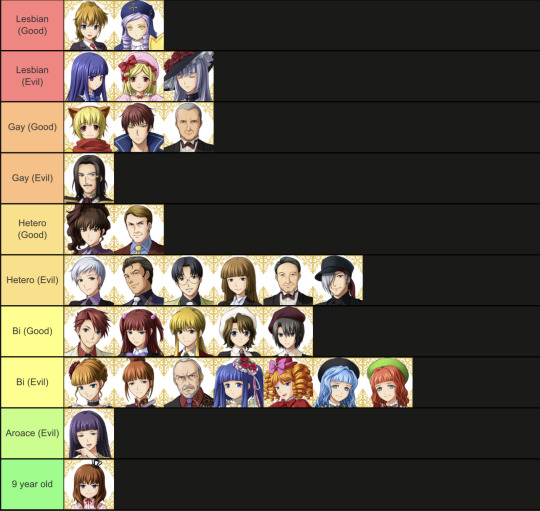
Hi
#.me#umineko spoilers#umineko#im very open to questions comments criticisms concerns tomatoes thrown at me or possibly a bouquet of roses#i can explain basically all of these. left kumasawa and nanjo out bc we dont know shit abt their relationships btw#i cld have left maria out too but i felt bad#was very tempted to put natsuhi in lesbian but keeping the failmarriage together was too funny#also good/bad alignment choices are based on many factors…def wld have put some characters in neutral if i had the space#also hideyoshi wld be in good het too i just didnt want him third wheeling krauss & natsuhi
21 notes
·
View notes
Text
8:11
Love your work @scribble0rat *makes an au out of that au* *poses*

#time diary(?)#audrey/kellie's time diary#audrey/kellie's art#sonic au#sonic movie au#uhm. not confident enough to tag the characters. but yeah!!#Stars Aligned(alight) AU#this /will/ be explained in more detail. but essentially this au is like. the thing i said in my previous Stars post (soulful moon adjacent#kids/next generation). the child is like. just Surge tbh. but if she got a better (so much) better childhood. but still keeping her#pride & desire to fight and become the best of the best. all of that#👍#knuckles ate a bee (/j) that's why he looks like that#(. uhm. yeah👍. but also also. to add to explaining about this timeline/au: it will make sense when i start pulling up#stuff i learned about pregnancy in hedgehogs & practically. uhm. in echidnas too.#👍)#this au is a. future one too. and it was just some silly thought i had. and it wouldnt leave so now i have made. this. a family
5 notes
·
View notes
Text
D&D alignment doesn't work
I was thinking about examples of "Lawful Good" characters when I noticed something bizarre.

The Seventh Doctor is best described as Lawful Good.
A Pragmatic and thoughtful schemer who, although Ruthless, is sincerely benevolent.

Princess Celestia is best described as Lawful Good.
A strict pacifist with a solid moral code, a kind and maternal ruler who is compassionate towards everyone.
This makes no sense whatsoever. How can the seventh Doctor and flipping Celestia have the same alignment?
This is because of the vagueness of the "Lawful-Chaotic" axis. The seventh Doctor is "Lawful" because he's driven and extensively plans things, while Celestia is "Lawful" because she has a strict code she basically never breaks.
Seven is "Good" because he battles injustice, while Celestia is good because she's nice too people.
Mind you, You could also assert that Seven's Manipulative tenancy makes him Lawful Neutral, Or that he's actually chaotic good.
It'd be more accurate to say that Alignment exist outside of story/plot, with MLP's lighter tone explaining why Celestia is nothing like the doctor. Then again, I severely doubt that given the character's have different motive, methods, and philosophies. Raising the question of why "Alignment" even exists if it has such wide categories...
4 notes
·
View notes
Text
Some weird things I’ve noticed about one/Vecna/Henry - an incomplete list/analysis (also not excuses for all his shit, I’m just trying to figure him out)
I’d first like to start off by analyzing what we don’t see in Henry’s backstory. First, with Victor Creel, we are shown Vecna’s first attack through a very flawed lense. His father cannot see that his son was the one that killed everyone, not a demon. He doesn’t see Henry as the problem, but we also don’t see any other problems with Henry from his perspective. We don’t actually see much of Henry at all from Victor’s perspective. The thing I find interesting about Victors story is that he says that him and his wife were tormented by memories from their past. We get an explaination for his past, but we never see his wife’s past. Or at least we don’t get an explaination for it.
When we go to Henry’s version of the story, we get a whole lot of stuff that Victor didn’t know or care to mention. Like doctor Brenner, he didn’t come up in Victors story. Whether that be because of the plot reveal of Vecna or whatnot, he wasn’t mentioned. Henry made note of the fact that it was his mother that called in the doctor. Victor described Henry as a ‘sensitive child’ but when Henry said what his parents thought of him he said that they thought there was something wrong with him, that he needed to be fixed. We don’t get any evidence for them saying that, nor do we get them saying anything. Henry’s mother, who is shown more, is still not explained. She called the doctor and Henry described both parents as having dark secrets- but he never gave us his mother’s.
There are many many years we do not see with Henry and doctor Brenner. We can assume that after Henry went into a coma he was taken by Brenner and was with him for all the years until el banished him to the upside down. But we don’t see any of that. When does he get that tattoo in this time line? Is it before he murders his family? After? If it’s after, then what was the final straw that Brenner had that caused him to put that implant in his neck to suppress his powers? We don’t know. We’ve been given a lot, but we’ve also been given nothing. Why does Henry want to destroy everything? If it’s because he’s inherently evil and bad then that’s just boring. It adds nothing to the story or too the plot other than a cardboard antagonist put up for eleven to pour water on.
Henry is the main antagonist. He has been the main antagonist since the first season. The discussion of motivations throughout the series is always the first thing the think about. The why. Characters and trauma and secrets were a major theme in season four. Lies in season three. Deceit in season two. The unknown in season one. If Henry has been the overarching villain this whole time then he’s been connected to those themes this whole time.
Henry Creel isn’t a one dimensional character. His thoughts and motivations haven’t been established yet. Why four as a number, why his mother first, why the library, why not try to manipulate eleven further when she tried to save max, why was he a sensitive kid? Why is he the main antagonist?
A lot of season four was finding out who Vecna was. And they found out that he was Henry. But they didn’t find out shit about his motivations. It’s not Brenner, because Henry didn’t seem to care when el said he was dead. It’s not anyone he’s already killed because they’re dead. His motivations don’t seem to be in line with anything we’ve been shown yet. So, maybe his motivations lie with what we haven’t seen yet, Henry’s secrets.
We’ve only seen the consequences from Henry: His family, the children, the people of Hawkins. He’s manipulative, he’s powerful, he’s a whole super villain. But what is the cause? In everything we know about Henry, we’ve been given what he’s done. But everyone- even Henry- glosses over anything that might have been a cause. ‘I saw what my parents had done’ great, why’d he kill his sister before his father then? ‘He was a sensitive kid’, that’s not enough. Will was a sensitive kid, he didn’t murder anyone. He was different isn’t a strong enough explaination for his actions.
Henry is the way he is because of reasons that haven’t been explained in the story yet. And if his whole thing is absorbing people and their secrets so they can all suffer together, then he’s got secrets too.
#stranger things#henry creel#st vecna#st 001#long post#he’s and evil evil man with evil evil plans because- [redacted]#saw a post saying that he’s been evil since like birth and my brain went uhhhhh- no.#not in like a ahaha you’re wrong and incorrect#but because I truly believe that we haven’t been given shit#also inherently evil character go against some major elements of stranger things#billy could have been a terrible human from birth but they gave him a backstory that explained his character#he was a terrible human being BECAUSE- everything shown about his family#Steve’s redemption arc wouldn’t have been a thing if they were going will characterization like d&d alignment charts#lawful evil isn’t applicable to the shows previous characters and doesn’t really make sense to be brought in now
22 notes
·
View notes
Text
thinking maybe i was going somewhere when i wrote a note in my isidora fic speculating that maybe one of the reasons her foil relationship with claude works is bc of how interesting it is to look at them in terms of how the both of them are treated differently as these supposed ‘foreign’ entities within fodlan n how that could be analysed through a more meta political lens of the difference in perception when a racialised person is primarily seen as an invading threat vs when a racialised person is primarily seen as a source of extraction of resources/labour
#x#i gave up on pretending this wasn’t n oc canon thing lol#thinking so hard abt a thread i read on claude n his treatment by other characters in the context of the political surveillance of muslims#in real life and then i saw something referencing how latin america has historically been obviously used for both resource extraction but#also as the source for bodies to perform the unskilled labour white USAmericans don’t want to or whatever#and how that aligned in a rather interesting way with how i explained isidora’s in story justification for why HER family was allowed to#remain in such an otherwise closed off/isolated continent#and it’s because they were the key for providing a trade relation with morfis who’s resources eventually came to be greatly valued in fodlan#and THATS why isidora and her family have been ‘permitted’ to remain stewards of the land. they’re tolerated solely for what resources they#bring into the continent#and on a far more small scale/symbolic level isidora herself takes a role in combat that’s meant to be very gruelling as a frontline tank#archetype who’s meant to absorb most of the dmg for her teammates. something which while not Exactly the same could arguably be an analogy#for hard labour/her body being used as a shield for the rest of her team#AUGH…. it sorta clicked into place so neatly i’m kinda. :33333 abt it. omg#sorry for being insane but this is just a cool revelation to me and i’ve been rotating it in my head for a while#anyways now i gotta go to a meeting with a tutor without a fully planned essay structure LOL whoops#isa
4 notes
·
View notes
Text
if you don’t agree with the way someone writes a character just don’t read the fic…? if someone imagines a character in a situation differently than you would imagine them that’s, like, okay. people write fics to have fun and express their creativity and pay homage to media they love. not to write the next canonically accurate script 🧍🏼♀️
#idk how to explain this to people on tiktok new to fanfics#you will always come across fics that just don’t align with how you see a character#im fortunate that in my time writing#i’ve never encountered comments like that#but it’s rude to see people openly complaining about it on tiktok#some of y’all don’t read dark fics and it shows
2 notes
·
View notes
Text
the number of obscure backstory references in nathaniel’s playlist-
#|☆| ooc#(hi i’m here for a bit and Thinking abt this agsgdg)#(i feel like a lot of writers have an impressive ability to associate songs with characters…..)#(but yeah i’m just agdgd yelling!!)#(i’ll share his playlist eventually bc i did have fun making it and some of the songs rlly do align scarily well with his story)#(but also… i haven’t explained everything yet so it would still be wild………)#(my taste in music is also Chaotic)#(also i am LOOKING at the dash and crying agsgd damian…. wren……….)
5 notes
·
View notes
Text
Tari uses Kleo or Violet as her favored aliases. her favorite flowers are violets and orchids
#about Tari#these are utterly irrelevant and useless facts#as for Kleo specifically...#that's directly related to the fact that I have a purely self indulgent AU wherein Tari is a child of my first ever DnD character#who was just a normal pharmacist before she got pulled into Magical Nonsense#she ended up helping to kill the God of the Dead#then she managed to convince other gods to let herself and her party take his place#so now Kleo is the High Queen of the Dead; goddess of the Heroic Dead and Magic#the 'Heroic' bit is VERY important#because a Hero in a classical sense is much more...loose of an idea I guess is the best way to explain it?#anyway Kleo is a firmly Neutral on the alignment chart#which she inevitably passed on to Tari#Tari as a god would have the domains of shadows; knowledge and secrets#(with a very small association with plants; specifically those that can be used in either a medicinal or nefarious purposes)#(still having an association with healing and death to show her connection to her parents because I think that's Neat)#okay I rambled a bit too much in these tags SORRY
1 note
·
View note
Text
sitting huddled in my little writers hut trying to piece together what kinds of effects i want bellum’s possession to have on linebeck
#i refuse to puss out on this and just leave it at big scar but i dont want to go too overboard#cuz post ph is a thing and linebeck is kiiind of thr main character of that so lingering possession#stuff or anything thats a threat to his self control/agency/whatever is off the table#i like the idea of him like. having a newfound proximity to demonkind or w/e#im not even sure what that means i have berserk on the mind and came up with that phrase#like ok. big scar. it hurts and has lasting effects such as: man idk itchiness? its a big scar#im against there being anything especially magical going on. more like- hes been branded yknow#FUCK i have berserk on the mind i just fully caught up on the manga and oooooguh casca#but like less monster attraction more hes generally demonically aligned????#demonic things and monsters are slightly more chill with him while holier or w/e#creatures are less trusting of him? like monsters still attack and shit but more sentient ones#he can like. talk to he can converse decently with demons and evil stuff but more benevolent beings#dont like him as much- like its not an indication of him ig but more that hes been in very close proximity to a strong demon and that#demon has chosen to trust him like. idk how to better explain it. other than that? theres one actual magical aftereffect ive had in mind#but it only shows up after mixing with other stuff. anyways its like linebeck has been lightly accepted as a demon?#more specifically he’s trusted by bellum and survived being possessed and in a sense is an honorary phantom#it doesnt really. do anything except that other magical thing. but it does make more intelligent monsters less hostile towards him#im workin on it#salty talks#edit as i reread these: monster attraction is technically there but like. he doesnt draw them to him
1 note
·
View note
Text
gonna unfollow all my topics on twitter when i get back except for cats and Buny so i can choose peace and no longer think about how much fandoms hate women!!! i'm choosing growth and healing!!!
#me: text#i'm no longer getting on my soapboxes to explain how racist and misogynistic y'all are in your echo chambers#bc you know and choose to not care so i am going to just be militant about not letting fujoshis in my inner circle#no more looking for art of my favorite characters and pairings anymore i'm just gonna go :) at what's in front of me#even if that means no more dehya and yukong bc god knows nobody gaf about them#the reality is i would've done this sooner but the voice in the back of my head told me that if i did#i'd be admitting that it's not a real thing and that people just Happen to have tastes that fully align with stories about light-skinned me#or i'd have to shame myself for caring about it bc so many people shame me for caring about it#but i don't!#i know i'm right and that should be enough for now i just have to enjoy what i can
1 note
·
View note
Text
If you guys liked the whole "Stephs flannel matches Peter's suspenders and bow tie" thing then this costuming detail is in tgwdlm gonna fuck you up.
When we get our first scene with Paul and Emma, the two are dressed in their respective main outfits. These are the ones people tend to associate with them.

But throughout the show, as they get closer and bond, their outfits become more and more similar. Pretty soon Emma's lost the apron

Then at the professor's house, Paul loses the jacket
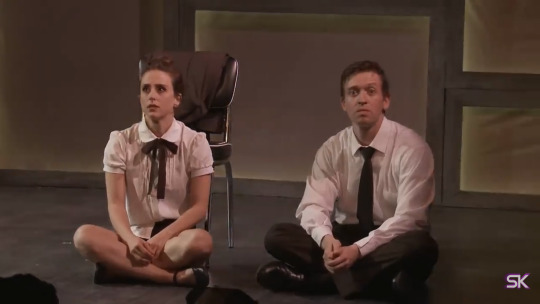
and by the time McNamara is infected, Paul has his sleeves rolled up and Emma's bow tie has come undone.

At this point, the two are at their most aesthetically similar, and also the closest they've been the entire show. This is moments before the helicopter crash and their failed kiss. They remain this way for a good chunk of time...until Paul comes back
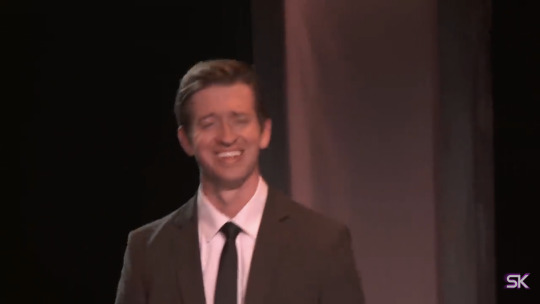

It's like some fast-paced foreshadowing. Emma remains in her changed state, the same as her character, but Paul is back to square one. He's wearing the same outfit he was when they met, and they no longer align. She doesn't know who he is anymore.
I don't know if this was intentional (and if it was, no one explained it to Jon) but it plays out so damn well.
#tgwdlm#paulkins#paul matthews#emma perkins#starkid#hatchetfield#hatchetverse#theory#npmd#jon matteson#lauren lopez
8K notes
·
View notes
Text
Why Kids Aren't Falling in Love With Reading - It's Not Just Screens
A shrinking number of kids are reading widely and voraciously for fun.
The ubiquity and allure of screens surely play a large part in this—most American children have smartphones by the age of 11—as does learning loss during the pandemic. But this isn’t the whole story. A survey just before the pandemic by the National Assessment of Educational Progress showed that the percentages of 9- and 13-year-olds who said they read daily for fun had dropped by double digits since 1984. I recently spoke with educators and librarians about this trend, and they gave many explanations, but one of the most compelling—and depressing—is rooted in how our education system teaches kids to relate to books.
What I remember most about reading in childhood was falling in love with characters and stories; I adored Judy Blume’s Margaret and Beverly Cleary’s Ralph S. Mouse. In New York, where I was in public elementary school in the early ’80s, we did have state assessments that tested reading level and comprehension, but the focus was on reading as many books as possible and engaging emotionally with them as a way to develop the requisite skills. Now the focus on reading analytically seems to be squashing that organic enjoyment. Critical reading is an important skill, especially for a generation bombarded with information, much of it unreliable or deceptive. But this hyperfocus on analysis comes at a steep price: The love of books and storytelling is being lost.
This disregard for story starts as early as elementary school. Take this requirement from the third-grade English-language-arts Common Core standard, used widely across the U.S.: “Determine the meaning of words and phrases as they are used in a text, distinguishing literal from nonliteral language.” There is a fun, easy way to introduce this concept: reading Peggy Parish’s classic, Amelia Bedelia, in which the eponymous maid follows commands such as “Draw the drapes when the sun comes in” by drawing a picture of the curtains. But here’s how one educator experienced in writing Common Core–aligned curricula proposes this be taught: First, teachers introduce the concepts of nonliteral and figurative language. Then, kids read a single paragraph from Amelia Bedelia and answer written questions.
For anyone who knows children, this is the opposite of engaging: The best way to present an abstract idea to kids is by hooking them on a story. “Nonliteral language” becomes a whole lot more interesting and comprehensible, especially to an 8-year-old, when they’ve gotten to laugh at Amelia’s antics first. The process of meeting a character and following them through a series of conflicts is the fun part of reading. Jumping into a paragraph in the middle of a book is about as appealing for most kids as cleaning their room.
But as several educators explained to me, the advent of accountability laws and policies, starting with No Child Left Behind in 2001, and accompanying high-stakes assessments based on standards, be they Common Core or similar state alternatives, has put enormous pressure on instructors to teach to these tests at the expense of best practices. Jennifer LaGarde, who has more than 20 years of experience as a public-school teacher and librarian, described how one such practice—the class read-aloud—invariably resulted in kids asking her for comparable titles. But read-alouds are now imperiled by the need to make sure that kids have mastered all the standards that await them in evaluation, an even more daunting task since the start of the pandemic. “There’s a whole generation of kids who associate reading with assessment now,” LaGarde said.
By middle school, not only is there even less time for activities such as class read-alouds, but instruction also continues to center heavily on passage analysis, said LaGarde, who taught that age group. A friend recently told me that her child’s middle-school teacher had introduced To Kill a Mockingbird to the class, explaining that they would read it over a number of months—and might not have time to finish it. “How can they not get to the end of To Kill a Mockingbird?” she wondered. I’m right there with her. You can’t teach kids to love reading if you don’t even prioritize making it to a book’s end. The reward comes from the emotional payoff of the story’s climax; kids miss out on this essential feeling if they don’t reach Atticus Finch’s powerful defense of Tom Robinson in the courtroom or never get to solve the mystery of Boo Radley.
... Young people should experience the intrinsic pleasure of taking a narrative journey, making an emotional connection with a character (including ones different from themselves), and wondering what will happen next—then finding out. This is the spell that reading casts. And, like with any magician’s trick, picking a story apart and learning how it’s done before you have experienced its wonder risks destroying the magic.
-- article by katherine marsh, the atlantic (12 foot link, no paywall)
16K notes
·
View notes
Text

How to avoid character inconsistency in your writing
Set your character boundaries:
What's the background?
What's your character's backstory?
What are their traits, and how do they portray them?
Know what keeps your characters motivated. (Are they reaching their goal?)
You can avoid quick shifting of scenes. Let your readers absorb the setting of the scene.
Ensure that their actions and decisions align with their development and growth.
Tip 1: Start your chapter with a scene or dialogue that comes back at the end, which helps maintain consistency.
Tip 2: Throughout the chapter avoid the fast pacing of the story, rather let the characters express themselves so that it's clear for the readers.
Consider how your characters react to situations that are hard to convey. (Do they feel nervous? Scared? Fearless?)
Dialogue writing is crucial in explaining your character's personality while writing a story.
This process requires lots of re-reading and writing, fixing character holes and rewriting character arcs.
#writeblr#writers on tumblr#creative writing#writing prompts#dialogue responses#writing inspiration#writing advice#writer help#writer tips#writer problems#writer community#writer on tumblr
3K notes
·
View notes